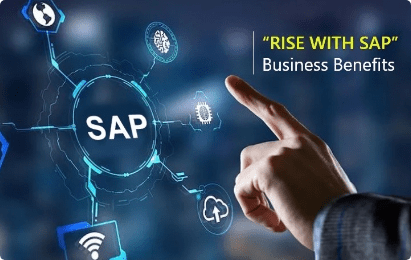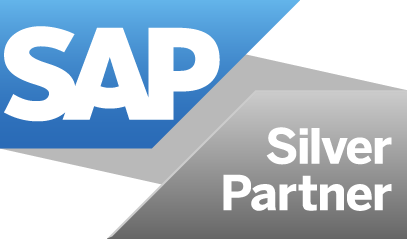
Blog
Orane’s blog posts keeping you up to speed with what’s hot in the world of business.
ERP Implementation – Everything about ERP Life Cycle

Since it is complex, it needs more resources and money to deploy a successful ERP implementation. Most of the time, an organization opts to hire an integration partner for their ERP implementation to reduce deployment failure, complete customization, and, get a professional person to do the implementation.
In order to optimize and automate business operations, successful ERP installations bring together a collection of connected applications, creating a single source of truth for the entire enterprise.
However, there is always a risk of implementation failure because of poor data migration or not providing proper training to the end users. Therefore, a successful ERP implementation requires alignment, strict planning, and cross-functional collaboration.
What is ERP Implementation?
An ERP implementation refers to the process of finding the business objectives, planning, configuring, and implementing them into an Enterprise Resource Planning (ERP) system.
If we take into account its technical aspects, it’s comparatively easy to communicate with and train the end users about your implementation and its features. The ERP implementation process places additional emphasis on effective change management by guaranteeing that user needs are taken into account at every stage and that all users are given training on how to use the system.
Successful ERP Implementation : Key Factors
Well, countless factors make ERP implementation successful, and any of them has a huge impact on your overall implementation. We have curated some of the most important factors for a successful ERP implementation.
- Objectives
- Planning
- Budget
- ERP Partner
- Customization
- Communication & Training
- Maintenance
1. Objectives
Organizations must come up with clear objectives in order to proceed with ERP implementation. It’s essential to know your business requirements and implement only meaningful and important features. Avoid Implementing Trending Features if they do not meet the criteria of your business objectives.
2. Planning
As you know, ERP is a complex software system that takes a lot of time to integrate with your business. An organization should choose the right team and ensure they prioritize the important milestones and manage the schedules on time.
3. Budget
An ERP implementation has a huge cost, including the license and the payment you’ll give to your ERP partner for integration. Your internal staff may also be affected during the implementation, so it’s fair to add these costs to your ERP implementation so that you don’t lack resources.
4. ERP Partner
Finding your ideal partner is one of the most important steps of an ERP implementation. Don’t just hire anyone as your ERP partner. It’s important to do research before selecting the right partner. There are two factors to get right in the selection process.
Find an experienced partner who has in-depth knowledge of ERP implementation rather than just broad software experience. Your selected partner should understand your business and its verticals. Not only that, they should be familiar with the kinds of customers you have and their behavior.
5. Customization
Customizing the system from the source code could be difficult post-implementation. The more you customize the system, the more difficult future changes and upgrades will turn out to be. Every ERP updates its software regularly, and every update will create a new mess for your implementation. To avoid this, it is important to make changes where they are essential.
6. Communication & Training
It would be difficult for end users to use ERP software without any training. Communicating and providing proper training post-implementation ERP reduces the frustration of using completely new software, motivates them, and rapidly increases productivity.
7. Maintenance
Many ERP implementations fail after doing everything right from the beginning. Many ERP implementations fail. The reason was simple. not maintaining the software on a regular basis. It’s important to prepare for post-implementation adjustments that will benefit your ERP implementation in the future.
8. What is the ERP Life Cycle?
As we already discussed, ERP implementation is a crucial step. It helps businesses streamline their business operations, centralize data, and reduce and manage all unnecessary expenses. Automating the business processes with clear objectives is referred to as an ERP implementation life cycle.
ERP implementation life cycle has several phases and stages right from starting, planning, designing, analyzing, implementing, transiting, and operating.
9. Key Phases of the ERP Life Cycle

ERP Implementation key phases infographic
The ERP life cycle refers to the entire 10–20 year life of the ERP system. Many people get confused about the ERP life cycle with the ERP implementation life cycle. However, below is the list of key ERP life cycle phases that will clear all your doubts.
10. ERP Roll-Out
The initial rollout of an ERP system is a process to benefit the organizations with all the operational processes and increase visibility across the local entities. It has a lot of complications as the ERP rollout phase itself contains various additional phases inside it.
With different problems, there are different rollout strategies that organizations can choose The following significant information about this phase will directly affect the phases that follow in the ERP lifecycle :
- The level to which the Vanilla ERP software has been customized, especially the source code, to meet current business needs
- The vendor’s dedication to future growth and its financial stability
- Support concerns, such as license fees and their escalation
11. Optimization
When the ERP system is rolled out and live, there is a possibility that organizations will face clatters due to a lack of understanding and confusion will start among users. In this phase, organizations need to consider additional optimizations for change management, review the optimization wish list, and perform the post-implementation audit.
12. Maintenance
This phase takes the longest time in the ERP life cycle as it has a bundle of subfunctions to perform and maintain the enterprise performance management (EPM), regularly maintaining the functions and software that help plan the budget, reports, and also predict the financial situation of the organization.
Maintenance always has a service level agreement and a large amount paid to the vendor as a license fee. However, if the system is complicated, the vendor can forward the task to third-party providers as well.
13. Extending Values
This phase runs simultaneously with the maintenance phase. The system must undergo only moderate to minimal system changes as a result of new or altered business processes. For systems that have undergone extensive customization throughout the implementation phase, the cost changes may occasionally be overwhelming.
Technology changes also take place concurrently with changes in the business. For fundamental technological platforms like operating systems and databases, new releases and versions arise. Regularly, ERP providers offer updates and new versions of their products, which have to be implemented into the current system. Usually, just light to the moderate effort is required. However, there is a problem because numerous software objects were altered during implementation. Retrofitting these things to make them compatible with updated models could prove to be a time-consuming, expensive migration procedure.
14. Declining Value
A time will come when you’ll think that you’ll no longer need the system and it’s not meeting your business objectives. Or maybe you’re using a version of the software that is no longer supported. Organizational and technology requirements are still changing for organizations. The cost, complexity, and difficulty of updating and changing the current system are mounting. Fixing the current system is no longer practical and offers to decrease returns. Investigation of alternatives results in the choice to re-implement.
15. Reimplementation
like the earlier-mentioned Roll Out phase. The organizations, however, are now more efficiently structured. It will be done more expertly during the initial step. In order to improve the return on investment for the following cycle, they may adopt a more vanilla version with little customization needed.
Conclusion
Implementing ERP might be overwhelming if you don’t have the proper plan and structure. However, implementing or maintaining ERP software with a proper objective will give organizations complete control and a clear vision of their objectives.
Additionally, as a SAP Solution Provider,, Orane Consulting has been providing the best ERP Implementation services cost-effectively for more than 12 years. We have a dedicated & experienced team with 10+ years of industry experience in various verticals. Reach out to us at sales@oraneconsulting.in today.
Subscribe to our communication
You agree to receive newsletters, marketing communication and latest developments from us.
Recent Posts

6 Tips to Boost Your Business Performance

How ERP Implementation is Essential for Businesses? – Top 5 Reasons

Take your Data into next level: SAP Masterdata Management

Rise with SAP: Business Benefits

Importance & Benefits of Digital Signature within SAP – EasySign

